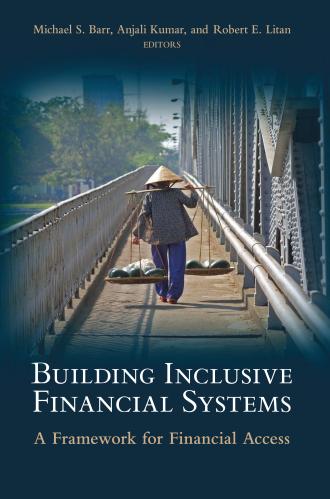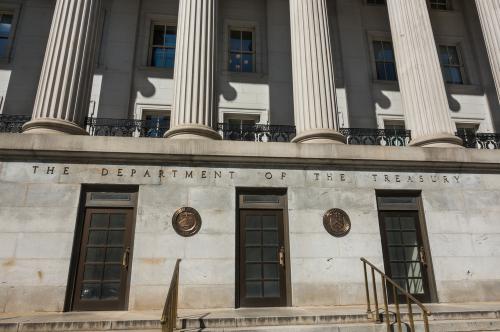Studies in this week’s Hutchins Roundup find that collecting payments from insurers is highly costly for health care providers, superstar firms account for less of productivity growth than previously thought, and more.
Want to receive the Hutchins Roundup as an email? Sign up here to get it in your inbox every Thursday.
Costly billing hassles lead some physicians to refuse Medicaid patients
Producing and processing medical bills in the U.S. is highly complex and costly for providers. With every patient visit, there is a chance that collecting payments will turn into a burdensome bargaining process with payers. Using administrative data on repeated interactions between insurers and physicians, Abe Dunn from the Bureau of Economic Analysis and coauthors find that the payment uncertainty introduced by this bargaining process is high, especially when submitting bills to Medicaid. They show that Medicaid is more likely to deny claims than Medicare, Medicare Advantage, and private insurers. Accordingly, they find that the willingness of providers to accept Medicaid patients is more sensitive to billing hassles than it is to reimbursement rates and that physicians in states with more severe billing hurdles are more likely to refuse Medicaid patients. The authors then estimate that the total costs of payment uncertainty and billing effort are around 25% of the average revenue from a Medicaid visit. The authors conclude that analyzing healthcare prices without accounting for billing costs and payment uncertainty may understate differences between private payers and Medicaid.
Smaller, younger firms contribute more to growth than Superstars
Using Census data on all non-farm businesses in the U.S. from 1982 to 2013, Peter Klenow of Stanford University and Huiyu Li of the Federal Reserve Bank of San Francisco find that new firms and firms less than five years old account for half of all output growth – three times their share of employment. On average, 60% of growth comes from existing firms improving their old products (e.g., new iPhone models), 27% from developing a new product (e.g., Uber or Netflix), and 13% from creative destruction—the replacement of inferior products through innovation. Firms with fewer than 20 workers account for 60% of growth while employing 21% of workers; in contrast firms with 5,000 or more workers contribute only 11% of growth despite accounting for 25% of employment. The authors suggest that the belief that “superstars” firms—large business that make up a significant share of the U.S. economy—account for an increasingly large share of productivity growth is misplaced.
Which locations should reopen first when Covid-19 recedes?
Using location data from smartphones and other data, Seth Benzell, Avinash Collis, and Christos Nicolaides from MIT compare the benefits and costs of closing different types of establishments. They reason that the decision to shut a location involves a tradeoff between infection risk and economic and social costs. That is, closing establishments where people gather more frequently leads to greater benefits by lowering the risk of transmission while closing economically important establishments such as businesses with high consumer and producer surplus imposes greater social costs. The core idea of their paper is that economically important locations with lower infection risks such as schools, day-care centers, universities, banks, general merchandise stores, and auto-dealers should be opened before less economically important ones with high infection risks like book stores, museums, gyms, parks, liquor and tobacco stores, and hair salons. Moreover, they show that between February and March the number of visits to the location categories in their study declined by 24.9% and that the largest decline was for less economically important locations with high infection risks.
Chart of the week: COVID-19 State budget shortfalls could be largest on record
 Quote of the week:
Quote of the week:
“Although many people have drawn comparisons with the financial crisis of 2008, the current turmoil is fundamentally different from recessions of the past. The challenges before us do not stem from vulnerabilities at banks or the bursting of a bubble-I can only liken them to a natural disaster of global proportions,” says John C. Williams, President of the Federal Reserve Bank of New York.
“If we look back to February, the American economy was strong, with unemployment at historical lows. But, now, social distancing and other restrictions imposed in response to the pandemic are causing severe, rapid declines in jobs and income. Unprecedented numbers have filed for unemployment insurance in the past several weeks alone, and we know that more economic pain is still to come. The reality is that the full scale of the economic consequences is still unknown.
The economic distress and the extraordinary uncertainty about the future course of the pandemic have set off a tidal wave of flows of money away from riskier investments to the safety of cash. This sudden shift led to an evaporation of liquidity and breakdowns in the functioning of key financial markets. This includes the market for U.S. Treasury securities, the cornerstone of the global financial system. These developments, if left unchecked, threaten to starve our economy of the credit that it badly needs during this difficult time.”
The Brookings Institution is committed to quality, independence, and impact.
We are supported by a diverse array of funders. In line with our values and policies, each Brookings publication represents the sole views of its author(s).








Commentary
Hutchins Roundup: Medical billing, young firms, and more
April 23, 2020